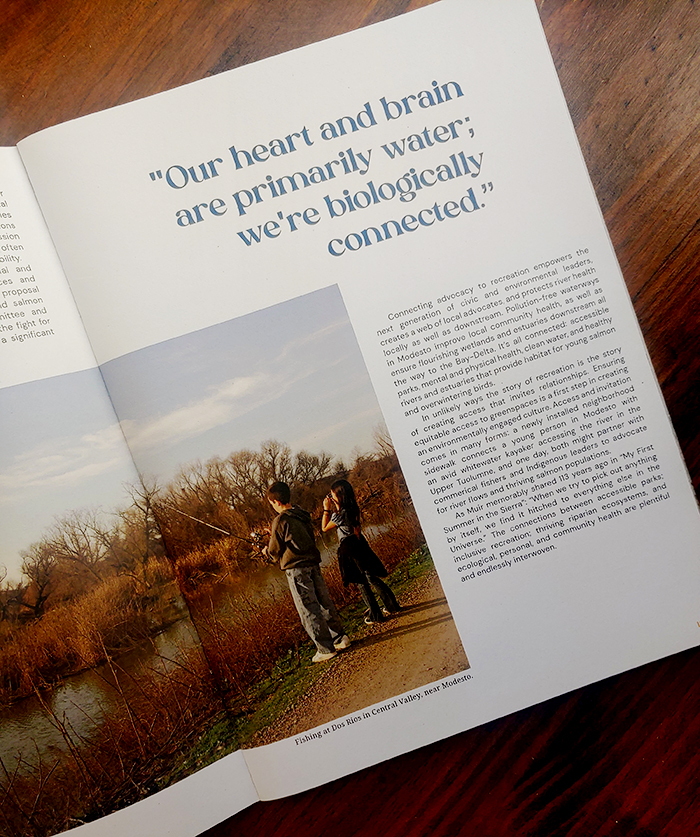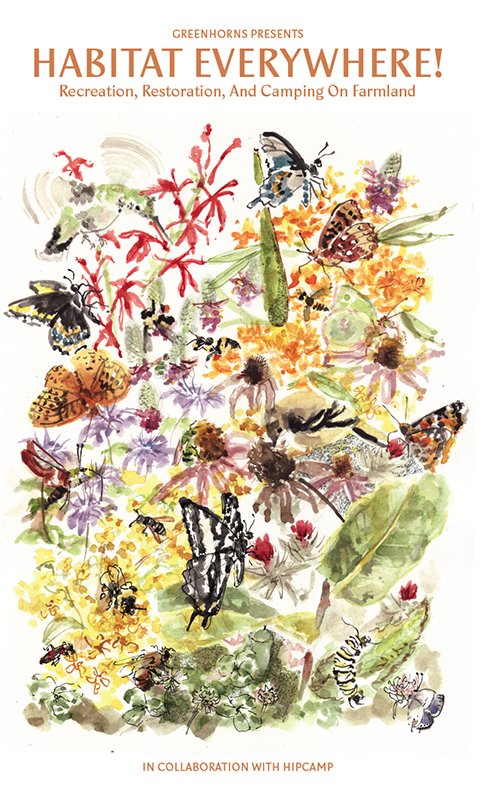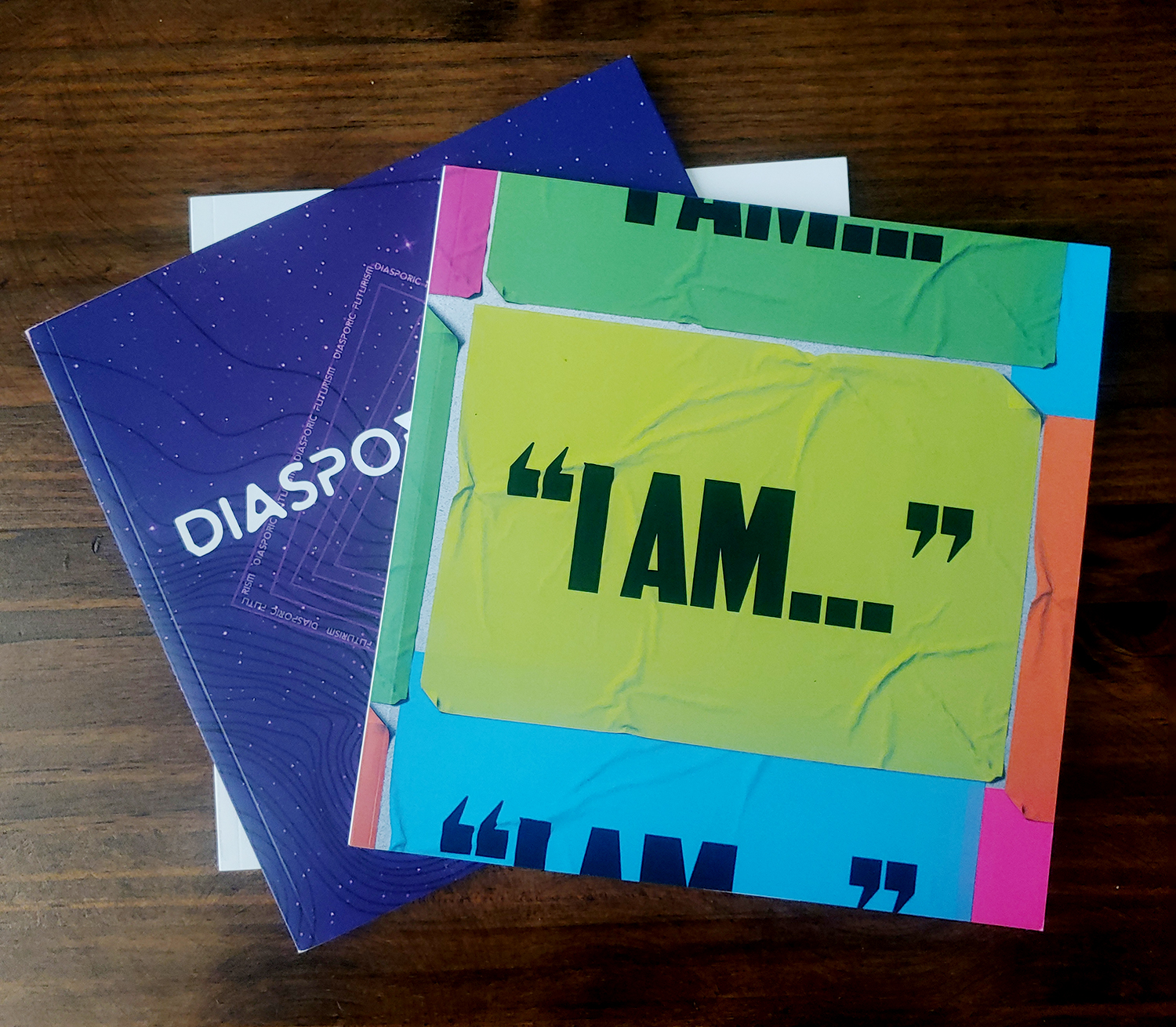Member Magazine
Spotlight: State of Parks

For State of Parks, I collaborated as the primary graphic designer, selected imagery, acted as a contributing writer on select articles, and provided copy editing and proofreading throughout.
Distribution: This print piece was a member magazine produced by the development team at TRT and distributed as a perk and marketing piece for those in the donor network.
Funding: All editorial labor and print costs were paid for via the annual organizational marketing budget.
I produced all graphic design, conducted interviews, and created writing for this news piece about TRT’s early involvement in Dos Rios State Park. This article chronicles TRT’s role in transitioning a private ranch into the public land that became California’s newest state park.
Earned Income Publication
Spotlight: Habitat Everywhere

Habitat Everywhere is an in-process guidebook by Greenhorns, produced for landowners and landworkers. As a contributing writer, I researched and wrote three case studies featuring the Nigiri Project/California Trout, Vesper Meadow Education Program, and regional prescribed burn associations in California.
Distribution: Once complete, this print piece will be intended as an educational, welcome resource for landowners who have newly joined the Hipcamp network.
Funding: This printed booklet was commissioned by Hipcamp, acting as earned-income for Greenhorns, the producing organization.
“Today the Central Valley is a highly engineered landscape, controlled by rigid systems of irrigation, drains, dams, and levees. The cost of this human-controlled design is the loss of 95% of wetlands, floodplain forests, and the food chain energy they produce. It is expensive to operate this way …”
“The connections in this meadow weave together the past and the present, and they revolve around food—food for birds, butterflies, and people. In a blink of time, we can see the meadow: a thriving zone of biodiversity and habitat as well as a place of abundant food stores—in the form of a Camas bulb gathering ground called Ti’nth (as noted by Latgawa elders); then land taken by white settlers for grazing cattle; and today an environmental nonprofit working back to the spirit of connectivity that is imbued in this land….”
“Starting at the Pacific Ocean and weaving along a 44-mile stretch of Northern California’s Klamath River is the Yurok Reservation and ancestral lands. A group of Yurok citizens works together to bring fire back to this ecosystem. The Cultural Fire Management Council’s mission is to further the use of fire as a means of cultural resource and land management. This region of California evolved with fire and prescribed seasonal burning—forms of knowledge and stewardship that were all but wiped out with colonial efforts at fire suppression … “
Exhibition Catalogues
Spotlight: Root Division

I was lead project manager for nine Root Division exhibition catalogs during my tenure. I coordinated the editorial workflow from conception to print, and I managed artists, curators, designers, copy editors, and proofreaders along the way.
To get each project started, I collaborated with the design team and curators to align on editorial approach and a design vision. From there, I contributed image selection, writing (front and back matter, captions, and introductory essays), interview transcription, developmental editing, copy editing, and final proofreading.
Outcomes & Distribution: These high-quality publications were excellent professional pieces for participating artists and inspiration pieces for our donor audiences. Catalogues were distributed to donors and participating artists, and were sold in the online Root Division store.
Funding: Each catalogue was grant-funded by foundations such as the National Endowment for the Arts or the Zellerbach Family Foundation.
For Introductions 2021, I wrote an intro essay called Memorials, Portals, and Other Ways to See In the Dark, and I provided project management of the editorial process, copy editing, and proofreading.
Catalogue design by Phi Tran and Michael Nguyen.
For a Joy Unexpected, I provided project management of the editorial process, interview transcription, copy editing, and proofreading throughout. Catalogue design by Phi Tran and Michael Nguyen.
For “I AM…”, I wrote an introductory essay, and I provided project management of the editorial process, copy editing, and proofreading throughout. Catalogue design by Phi Tran and Michael Nguyen.




